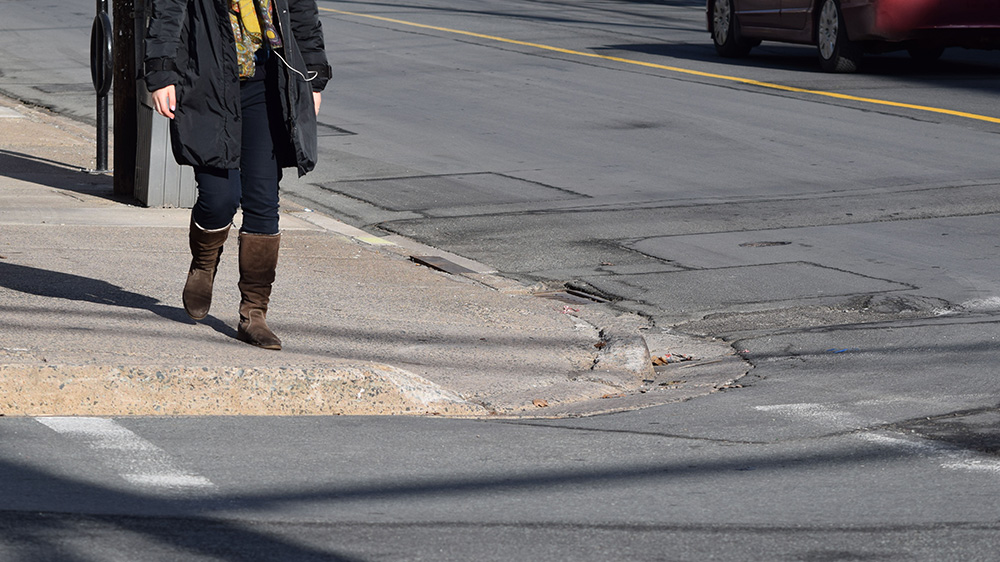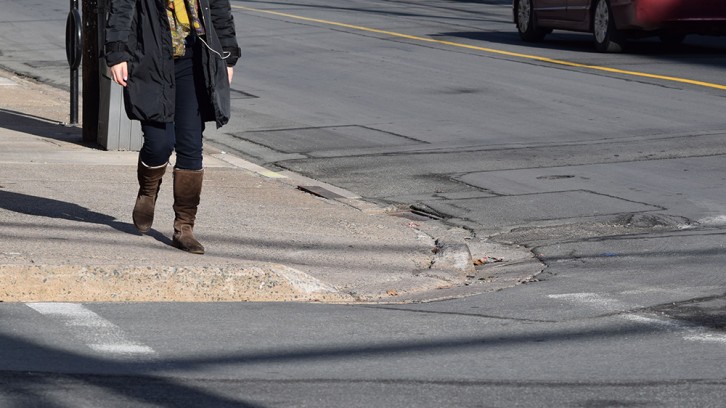Accessibility
Halifax streets not accessible for visually impaired, committee hears
Dalhousie planning student presents research findings to HRM accessibility committee

caption
Some curb cuts on Gottingen Street don't line up properly with the crosswalks.
caption
Some curb cuts on Gottingen Street don’t line up properly with the crosswalks.Every single day, Troy Nauffts faces obstacles that make it hard for him to get around. He is visually impaired and uses a guide dog.
Sometimes he has a hard time finding or reaching crosswalk buttons. Other times there are objects in his way.
“Just little things, like broken pavement or something, make such a difference,” he said.
Nauffts took Kaitlyn Walker for a walk along Gottingen Street to show her what visually impaired people like him encounter.
Walker, a masters of planning student at Dalhousie University, recently conducted a three-month research project about accessibility on Gottingen Street between North Street and Cogswell Street. She presented her findings to Halifax’s advisory committee on accessibility on Monday.
Walker chose Gottingen Street as an example to demonstrate the kinds of accessibility issues that she says exist throughout the city.
“It’s got a lot of services, and a lot of lower income residents in the area,” she said. “It’s a major transit route. So it’s just kind of a combination of factors.”
Walker found that there are several ways in which the street does not meet the needs of visually impaired people, including:
- Objects, such as signs, create obstacles in people’s paths.
- Pathways sometimes change from one texture to another (for example, pavement to cobblestone) for no particular reason. This can be confusing for people who use tactile cues to help them navigate.
- Bus stop signs are high up, making it difficult for people with limited vision to see them. They also don’t include braille or raised lettering.
- At crosswalks, the push buttons don’t give visual, tactile, or audio cues.
- Curb cuts often don’t line up properly with the crosswalks.
Nauffts says curb cuts are the biggest, and most dangerous problem.
When a curb cut isn’t lined up with an intersection, a visually impaired person could walk into traffic. And people in wheelchairs have to turn their chairs and wheel back to the intersection after rolling into the street.
Walker says her research is just a starting off point, but she hopes it can be helpful.
Committee members commended Walker’s research. A few members who are themselves visually impaired talked about their own experiences trying to navigate Halifax’s streets.

